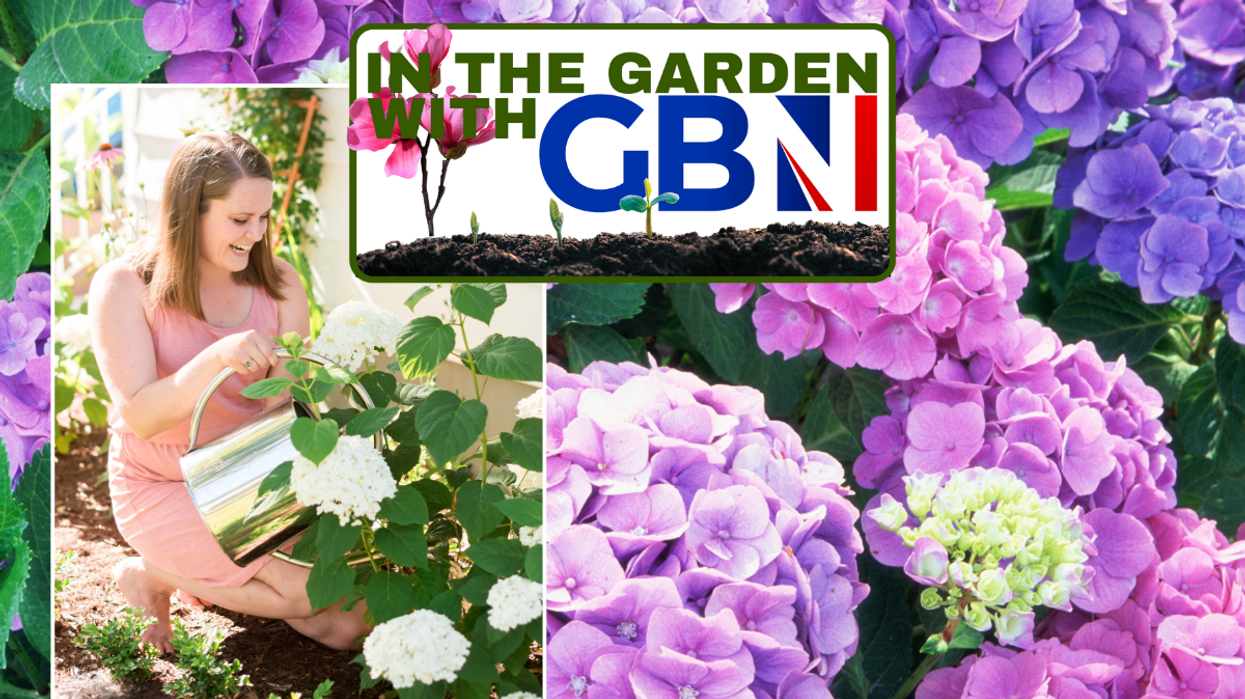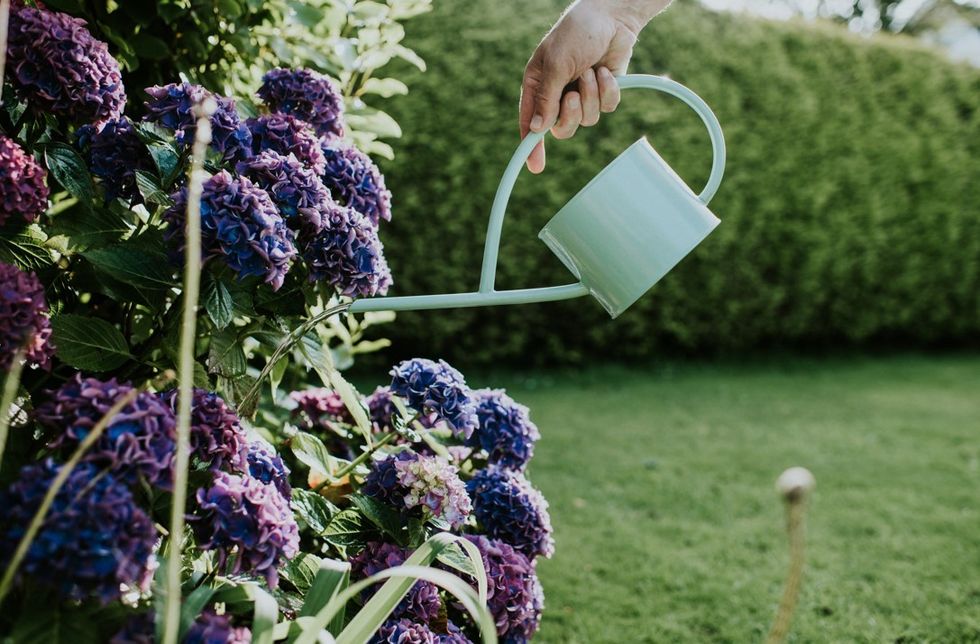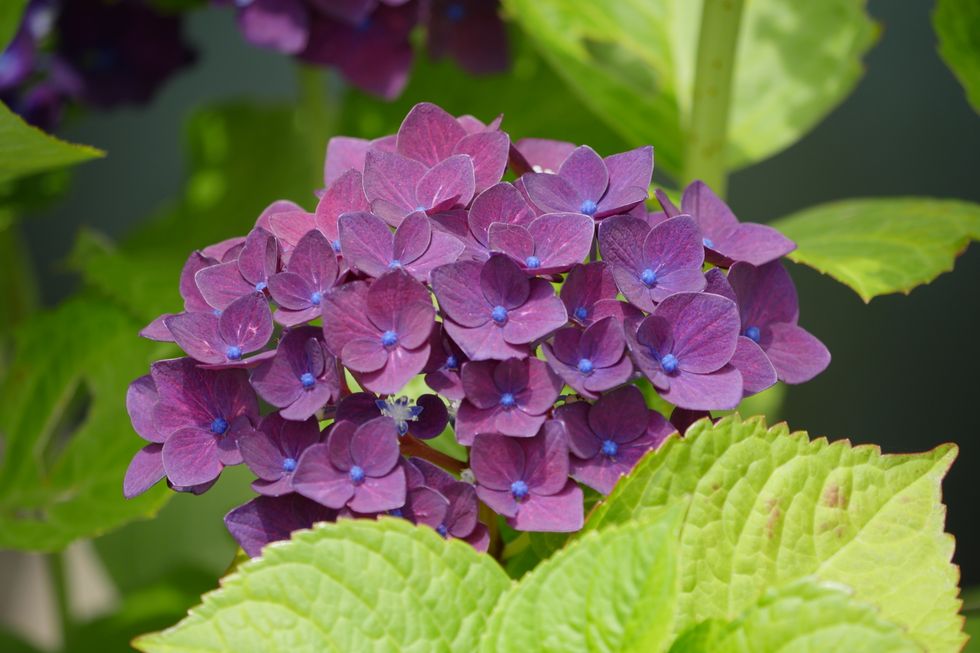In the garden with GB News: Hydrangeas - everything you need to know for a beautiful display in your home and garden

Hydrangeas are a great plant to brighten up your garden
|GETTY

GB News is sharing everything you need to know about how to help the plants in our gardens and homes thrive. This week, we look at how to grow hydrangeas
Don't Miss
Most Read
Hydrangeas are beautiful, colourful plants that brighten up any garden. They also make a wonderful indoor plant.
GB News shares the best tips to help you grow and maintain the plant and how to help it thrive in your garden.
Everything to know about caring for hydrangeas
Planting
Spring and autumn are the best times to plant hydrangeas so gardeners should be quick if hoping to do so this year. To do this, dig a deep hole that is three times wider than the rootball and water well.
Keep the soil moist in the coming weeks. Hydrangeas enjoy light shade so avoid planting in areas of the garden that are too sunny.
Avoid exposed parts of the garden as this could open the plants up to spring frost.
Gardening expert from Budget Seeds Craig Morley shared planting advice. He told GB News: "If your soil is dry, you should bulk it up with organic matter that will help to retain moisture before planting hydrangeas, such as compost.
"Water the area where you will place the plant around an hour before you plant it, and hydrangeas should not be planted deeper than they were in their original pot. Water in the plant well, and mulch after planting. Ensure that the plant is kept well watered in its first spring and summer."

Experts shared the best care tips
|GETTY
Caring for hydrangeas
One of the main ways Britons can care for their hydrangeas year-round and ensure they thrive is by pruning regularly.
Britons should look to prune in spring to promote healthy growth and gardening expert at Rhino Greenhouses Direct Andrew White shared tips for this.
He told GB News: "In early spring, it's ideal to prune summer-blooming shrubs like hydrangeas to encourage healthy growth and flowering. It's also important to trim back any winter-damaged branches, ensuring tools are clean and sharp to prevent disease spreading."
As the months go on, Britons will need to prune again. Gardeners can take hydrangea cuttings in July as this ensures they get even more plants next year.
Andrew continued: "July is the time to take cuttings of your hydrangea to give you even more plants for next year. Take a five to six inch cutting from a branch, ideally one that hasn’t flowered this year, remove the bottom leaves and cut the largest leaves to half their size.
"Plant your cuttings in coarse sand and water well before placing a clear plastic bag over them and placing in a bright but shady place."
Pruning can also be done in the winter as this encourages new plants to appear. The expert added: "Winter pruning of hydrangeas involves removing dead or weak wood, selectively shaping for size and form, and promoting new growth by trimming older stems.
"Thinning out crowded areas and deadheading spent flowers contribute to maintaining a healthy, well-shaped, and continuously blooming hydrangea.
"Pruning hydrangeas in winter fosters vigorous growth, shapes the plant for a balanced appearance, and optimises blooming potential by encouraging the development of new, flowering wood.
"This practice also improves overall plant health by removing weak or dead branches and enhancing air circulation in the garden."
Gardeners should make sure to water hydrangeas regularly so they are in good health, gardening expert Craig Morley continued.
He said: "During their growing season, hydrangeas should be watered at a rate of one inch per week, and water them with rainwater if you want the flowers to stay blue.
"In hot spells during summer, keep the plants well-watered to stop them from wilting. You should mulch hydrangeas every year in spring, but they do not need feeding as this will encourage them to grow leafier at the expense of flowers."
How to look after hydrangeas in your home
Hydrangeas can be cut and brought inside as a wonderful way to brighten up the house. After bringing the flowers home, it is important to trim at least half an inch from the stem and put in water straight away.
Remove any leaves that go below the water line and use flower food in the water to extend the life of the plant. Something people often forget to do is to change the water every few days, but this is an important task to do.
This is because bacteria start to appear in water that has been sitting for a long time, so giving stems another trim, replacing the water and adding flower food every few days will keep them in good health.
Chris added advice for anyone with hydrangea plants inside their homes. He said: "These should be kept in an area where they will receive bright, indirect light. The soil should be kept as moist as possible, but allow the top third of the soil to dry out between waterings.
"Alternatively, soak the plant in water once or twice a week to keep the soil moist. You can place a saucer or tray underneath the flower's pot to help drain excess water, and this water should be disposed of after half an hour.
"You can give the hydrangea plant food every other week when it is actively growing, following the manufacturer's instructions on the packaging.
"Prune the plant in summer after it has stopped flowering, and remove faded flowers to keep it tidy. When pruning, only cut back dead or weak stems, as it is necessary to keep the older stems so that the plant will bloom again."
LATEST DEVELOPMENTS

Hydrangeas require a lot of water
| GETTYHydrangeas care timeline
Spring
Fertilise: "You can fertilise your hydrangeas to prepare them for blooming, but be careful as to how much you do this so that the plants do not grow leafier instead."
Mulch: "You should also mulch the plants in spring, as this will help to regulate the soil temperature, conserve moisture in the soil and prevent weeds from growing close by."
Prune: Prune the plant and trim back any damaged branches to reduce the risk of disease spreading.
Summer
Water: The plant enjoys moist soil so it is important to water regularly during the hot summer months. Chris said: "Ensure you are watering hydrangeas well in prolonged hot weather, and climbing hydrangeas can be pruned in summer."
Cut: Take cuttings in the summer to create more plants the following year.
Autumn
Plant: Autumn, like spring, is a good time to plant hydrangeas.
Clear debris: Removing debris and fallen leaves and weeds from the base of the plant.
Water: Water regularly to ensure the plants are well-hydrated and survive during the winter months.
Deadhead: "You can deadhead hydrangeas in autumn, but this is not essential. Autumn is a great time to try altering the pH of your soil if you are looking to change the colour of the flowers."
Winter
Clear: Remove dead leaves and debris again in the winter.
Mulch: Frost can severely damage the plant but mulching will help to protect them in the cold weather. Chris said: "Mulch the hydrangeas when the ground starts to freeze to protect the flower buds."
Bring plants inside: "Potted hydrangeas should ideally be brought inside where they will go dormant, but you should still water them once a month to keep the roots moist before they become active again in spring."










